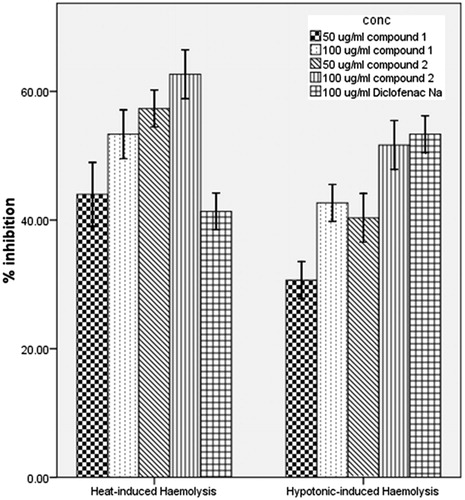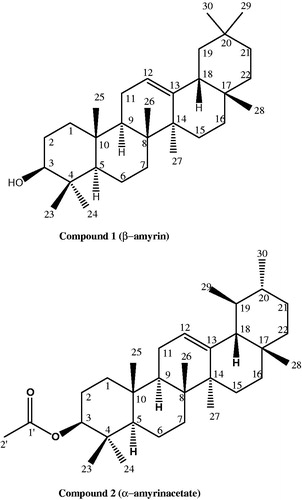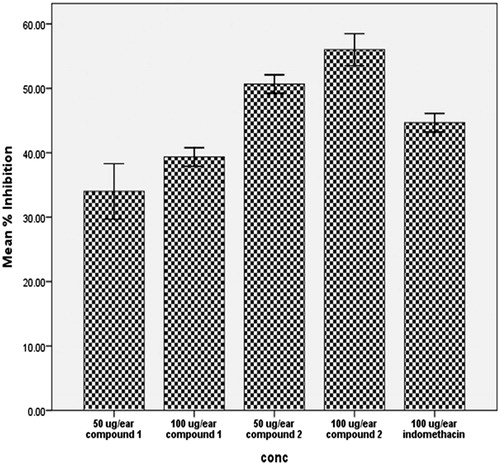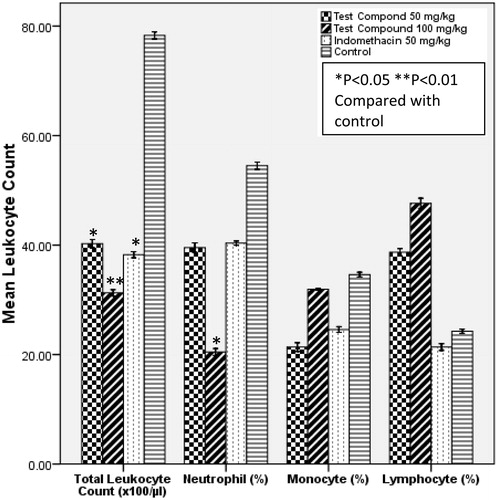Figures & data
Table 1. NMR spectroscopic data of 1 (β-amyrin) and 2 (α-amyrin acetate).
Figure 2. Effect of compound 2 on the development of acute inflammation after sub-plantar injection of egg albumen in rats. Animals received 50 and 100 mg/kg (p.o.) of test compounds. Treatment animals (n = 5) were compared with control animals (n = 5) which had received vehicle only.
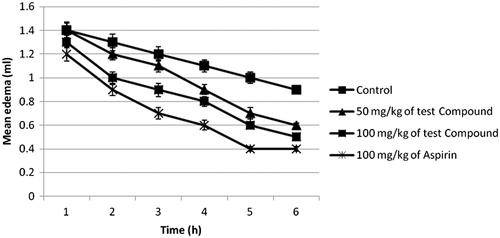
Figure 3. Effect of compound 2 on gastrointestinal irritation in rats. Animals received 40, 50, or 100 mg/kg (p.o.) of test compounds. Treatment animals were compared with control animals which had received vehicle only.
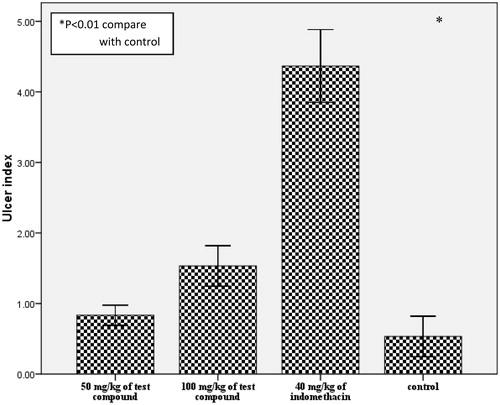
Figure 4. Effect of the test compounds on heat-induced and hypotonicity-induced hemolysis of human erythrocytes in vitro. Erythrocyte membrane stabilization was determined at drug concentrations of 50 and 100 μg/mL in isotonic phosphate buffer, pH 7. Treatment animals were compared with control animals which had received vehicle only.
